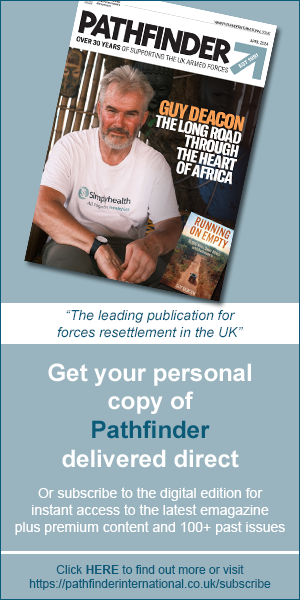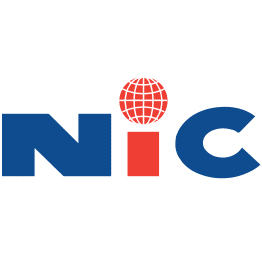Currently, the CV is still the most common way for us to sell ourselves to potential employers, but new ways of working and our greater use of technology means we need to have a more pervasive professional profile. Giles O’Halloran explains…
The CV is still a powerful tool, but new formats, the associated tools and other media forms are key to improving your credibility and employability in the modern networked and global world of talent. So let’s look at how things have and are changing.
The CV
Your CV used to be typed, on paper and sent via the post to a potential employer. Today, your CV is more likely to be softcopy, on a PC or in the Cloud, and emailed to potential employers. Naturally, you can also print copies off and send them via the postal system , but more often than not an employer or recruiter will say “email me a copy of your CV.” This has been a change that has taken place since the 90s, but it is still a fundamental way of selling ourselves as a professional to potential employers.
The CV model, language and expectations have changed. Focus now is very much on a format that illustrates your skills, experience, knowledge and qualifications – easy to read and quick to grasp. These are the key things an employer will look for from your CV. However, the softcopy CV means you can adapt it quickly and send multiple copies in an instant. There are also different kinds of word processing software and versions of that software available, so be careful you use the most common types to prevent any would-be employer being unable to see your details. This will have an impact on your potential prospects.
Always remember your CV should be a live document, updated and adapted regularly with changes or developments in your role. You can keep a generic copy and should consider editing or adapting it to apply for different jobs. This makes your CV a more flexible friend when applying for a job, and if you can store it in the Cloud, you can access it anywhere and any time.
Cover Letter
Although these don’t hold the same power that they used to, they are still a very useful way to introduce yourself and sell what is on your CV. Again, keep a softcopy available and it is therefore always good to have a generic template saved that you can adapt and save again to serve your needs.
A good cover letter or cover note should contain three things to get you noticed – the what, the why and the wow. The “what” relates to the role you are applying for or the reason for a speculative application. The “why” says why you are the right fit and how well you fit with the role, the organisation etc. Finally, the “wow” is what you need to do to convince the reader that you are someone worth considering. You should therefore focus on what great things you can bring to the role that make you a well-rounded candidate. So consider these points when drafting your next letter, save a copy and adapt it every time you need. It will save you time but keep adapting it to suit your needs, and again it is an addition to your employability armoury.
Blogging
This is a great way to add more meat to the bones of your CV, and provides an excellent way to profile you via the online world. In simple terms, you can use a blog to illustrate your expertise or your knowledge of a specialist sector, skill or subject matter. By writing and publishing posts on areas of interest that also support your CV, this can improve your prestige and credibility with potential employers or recruiters. Consider offering to write a free article or post for a respected trade magazine or bulletin. This will help give you exposure and can help you become recognised as an expert in your field if you can post articles through a number of mediums. Do consider blogging if you want to pack a better punch behind your CV.
People are also now using Vlogging (via tools such as YouTube or Vine) to not only profile themselves but also build an online CV for people to see or listen to. This is something very creative and usually done by those in the marketing, technology or communications space, but it could also be a very powerful tool for any professional looking to create a more pervasive professional profile. Vlogs and podcasts can be hard to make, but could put you way ahead of the competition.
If you are looking for a job, you need to be on LinkedIn. It is effectively your CV and your professional profile online. The fact it is a social media platform means that it is more dynamic, and allows you to network via others to find the right job for you. It is simple to use, free and intuitive. You can contact people directly if you have worked together, or you can engage with others if you share similar groups or interests. It is essential you build your network via LinkedIn, use the groups as a way to keep you informed and to build stronger contacts, or even develop your own job profile on there, which is again free and will update you daily or weekly on jobs that might be of interest.
LinkedIn will become second nature the more you use it. Try using the endorsement and recommendation functions to get people to rate you – it acts like a reference and some jobs you apply for via LinkedIn will not accept you unless you have a certain number of endorsements or recommendations. These are great ways to add to your credibility, your profile and how potential employers will rate you.
You can also link a Twitter feed and attach documents (such as presentations, awards etc.) so that you can share key information about you that might appeal to recruiters or employers using LinkedIn to hunt for candidates. Trust me, they do use LinkedIn as a key tool and making your profile more appealing will catch their eye.
Twitter can be a useful tool when jobseeking, but some people take this for granted. It is a perfect microblogging tool that you can embed in your blogs, other social media and use for sharing knowledge, leads and ideas very quickly. People are using Twitter to aid their jobsearch, advertising their skills and using their network of followers to help endorse or support their efforts.
There are even companies, organisations and networks on Twitter than can help you connect or find job roles. They will post guides, links, potential vacancies and help you identify those who might be looking for someone of your background. These feeds are constantly updated and often in real time.
A number of companies and recruiters will also advertise their jobs via Twitter. They use it to push the opportunities out there, identify or get candidates recommended, and to help leverage the networks people have to spread the message further. Not only does it work for recruiters and companies, but by following them or being connected means you are kept informed regarding any employment opportunities. It is a useful tool to help get the message out there about you, get people recommending you or to keep your finger on the job market pulse.
Facebook/Google Plus
Although these are more “social” platforms, they can provide an opportunity when it comes to jobseeking, networking and researching. Most companies these days will have a social media profile either on Facebook, Google Plus or perhaps both. This is a great way for you to keep posted on changes, developments and even jobs that might be coming up. Sometimes, an update might lead you to a potential job opportunity. In the same light, you might be able to connect with people who work there and as with LinkedIn, you can use the platforms to seek out people that can help you in your search for a job. People usually help other people when they can, and that is one of the true powers of online networking.
Social Media Management
If you are or become very social media savvy, you need to manage your online profile effectively. You can do this by using social media management systems. These act as a conduit and control for your social media presence, helping manage communications, postings and connections in an effective way to ensure you are able to focus time and effort on what matters, or what needs your attention.
The most popular of these is probably Hootsuite. It is free to create if you have up to five social media profiles, but you can pay for additional functionality if you wish. However, most people are able to manage their social media streams via the tab system effectively without having to pay. Through using tools like this, you can save time by picking up messages, leads and following up on things that are of genuine interest. They help you avoid suffering from information overload.
Social Media Search
There are search functions on each social media platform and they often also analyse your networks or those of your contacts in order to make suggested connections or follows. However, there are also tools out there that can help you search through social networks or hone your searches to improve your connections via tools like LinkedIn and Twitter.
For instance, if you are using LinkedIn, you might want to use Recruitem. As long as you are logged onto LinkedIn, you can conduct searches to identify personal contacts that can be exported to an easy to use Google search profile. In the same light, the tool TacticsCloud does exactly the same with Twitter. Both these tools can help you search your networks to find suitable contacts to approach and can be used in synch with the standard search options. Both are free and very easy to use, so have a go!
Going Mobile
Most social media, file storage and email apps can be found in the Cloud and are downloadable/free via your relevant provider. In the same light, some recruitment firms are also leading the way and have built searchable apps that allow you to apply online anywhere via mobile for a job. This means that your mobile can become a very effective, flexible and instant job finding tool wherever you are.
So, if you have set up your social media, stored relevant CV or cover notes via the Cloud, and have an email system active on your phone, you have the opportunity to look for jobs, build professional networks and even make applications online. Doing so just takes managing your pervasive professional profile to that next stage.
This article is not about focusing on one thing to make you more attractive to employers or recruiters, it is simply about looking at combining all the efforts, tools and opportunities to create longer term employability in whatever career you choose.
About The Author
Giles O’Halloran is an experienced Recruitment and HR professional, with a wealth of knowledge in both sectors. He has worked for a number of large and respected organisations, including blue chip and global recruitment companies. Giles has spent over 15 years providing CV writing, interview preparation and professional networking support to clients in both the public and private sector. He also has over a decade of service in two branches of the Reserve Forces. Feel free to connect with Giles via LinkedIn or follow him onTwitter

















